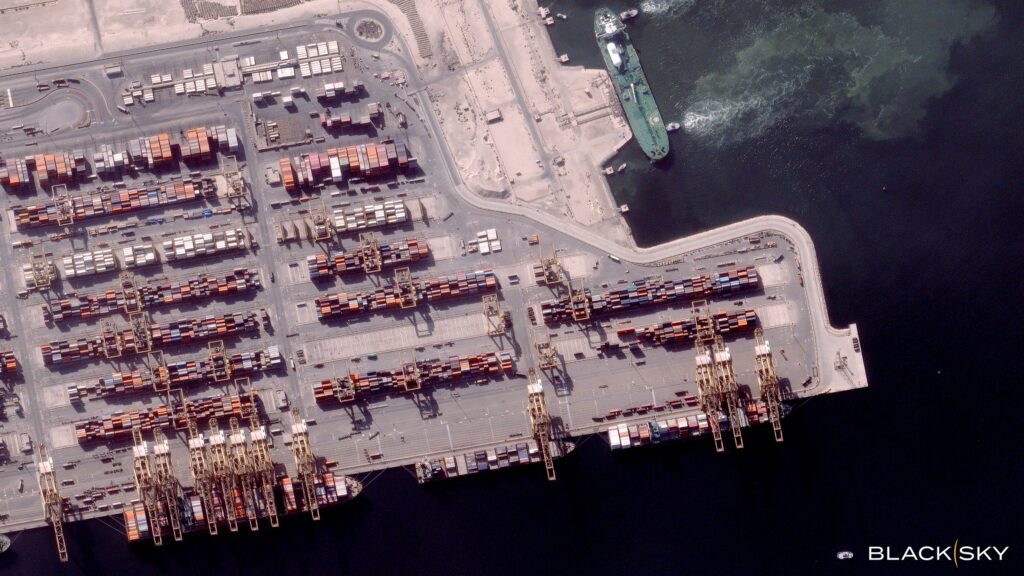Now Reading: Making COMSATCOM accessible for large-scale defense requirements
-
01
Making COMSATCOM accessible for large-scale defense requirements
Making COMSATCOM accessible for large-scale defense requirements


The rise of peer adversaries and new offensive weapons is changing communications requirements from military command headquarters to the warfighting edge. That brings an increased need for secure, reliable networking capacity to meet real-time response demands of modern battlefield situations. Rapid communications will also be integral to achieving the vision of the Golden Dome multi-layer defense system proposed by the current administration. Traditional military satellite communications (MILSATCOM) systems are already taxed by growing data-intensive requirements, which will only increase as Golden Dome develops.
The Department of War (DoW) faces insufficient time and resources to build new MILSATCOM capabilities for the ambitious Golden Dome schedule. However, commercial satellite communications (COMSATCOM) capabilities have now advanced enough to meet much of the DoW’s requirements. While adoption of COMSATCOM will require an adjustment to traditional operating practices, commercial capacity can serve a MILSATCOM-like role when procurement is approached in non-traditional ways.
COMSATCOM viability requires acquisition innovation
Defense leadership has been testing COMSATCOM adoption on a pilot program basis for some time. As far back as 2014, the Air Force began its Pilots and Pathfinders program series to explore innovative uses for and approaches to acquiring commercial capability. The Army’s 2024 Satellite Communications as a Managed Service pilot program assessed a lease-versus-buy model to determine if such an approach could provide the performance needed for communications at the tactical edge and at a cost-effective price point. These programs successfully provided relevant data regarding the potential of a commercial model.
It is now time to take this a step further. The current mantra among United States Space Force (USSF) Space Systems Command leadership to “buy what we can before we build what we must” underscores the need for wider-scale COMSATCOM adoption. However, federal rules typically restrict its acquisition to budgets categorized as operations and maintenance, which is designated for sustaining existing systems — not purchasing new ones. This impedes the DoW’s ability to quickly acquire the amount of COMSATCOM capacity it needs, and needs on an extended, more cost effective basis.
A potential alternative is a contractual model known as indefeasible rights of use. This long-term lease model, which required Congressional approval, has been used by the Defense Information Systems Agency since the early 2000s to acquire terrestrial fiber optic telecommunications capacity without having to own the fiber itself. The same model could also be applied to the acquisition of commercial network bandwidth from space. To achieve that, Congress would need to authorize an exception that permits the use of procurement dollars to buy a service over a multi-year term rather than just buying capacity on the spot market.
The power of capacity pools
Preparing for surge capacity is another key consideration. A USSF framework known as the Commercial Augmentation Space Reserve creates a mechanism to leverage COMSATCOM for crisis situations or wartime needs deemed essential to national security. The idea is for the government to pre-negotiate commercial contracts that will quickly add SATCOM capacity as and where needed. Of course that requires that commercial providers are able to meet the demand.
One way to ensure this is for the government to acquire COMSATCOM delivered under a Service Level Agreement rather than on a best effort basis. Buying what is known as a “capacity pool” will enable the government to quickly reallocate capacity as missions and/or geographies change, and scale capacity pools to meet new requirements. That includes sharing it with allies if needed.
There should also be a regular cadence of provider data-sharing to advise the military about excess capacity it could readily buy for unanticipated surge requirements. The lifespan of a satellite will also determine how long the capacity in the pool will be available; longer lifespans will enable more options for short- and long-term missions.
Ensuring compatibility and control
SATCOM is not useful without terminals to receive and send data from and to space. Contractual arrangements should allow for scaling the size of a capacity pool up or down to the number of terminals that will be active in the defense environment. This approach is actually the solution to the long-standing SATCOM synchronization issues encountered with each generation of capability, whereby satellites are often launched far ahead of users being equipped with terminals.
It’s also important that the COMSATCOM has the flexibility to work with a range of terminals. Many deployed military terminals will be operational for years to come; adding new terminals should not tie the DoW to a single satellite operator or render older equipment obsolete. Instead, operators whose COMSATCOM integrates with multi-waveform capable terminals will enable user choice of equipment, support long-term deployments and free the DoW from vendor lock.
Finally, security is a critical consideration for COMSATCOM to be a viable option for military purposes. For the most sensitive requirements, defense leaders can opt for solutions that support stringent standards such as Infrastructure Asset Pre-Approval, National Intelligence Policy 12, and AES-56 encryption. Attributes such as satellite beam size and beam hopping frequency can boost security by reducing the probability of intercept, avoiding jamming and compartmentalizing links to minimize the potential for signal leakage.
As Golden Dome and other data-intensive defense programs advance, the right COMSATCOM capabilities, deployment models and acquisition options are the only way to ensure the network capacity that will be needed to meet modern defense requirements.
Charles “Chuck” Cynamon is President of Telesat Government Solutions where he is responsible for defining the commercial, operational and strategic initiatives and delivering the latest-generation of commercial Low Earth Orbit satellite capabilities to the U.S. military, intelligence and civil sectors. Cynamon brings deep knowledge, expertise and leadership acumen from over 24 years of service in the U.S. Air Force and a subsequent decade working with leading space and satellite enterprises.
SpaceNews is committed to publishing our community’s diverse perspectives. Whether you’re an academic, executive, engineer or even just a concerned citizen of the cosmos, send your arguments and viewpoints to opinion@spacenews.com to be considered for publication online or in our next magazine. The perspectives shared in these opinion articles are solely those of the authors.
Stay Informed With the Latest & Most Important News
-
 012024 in Review: Highlights from NASA in Silicon Valley
012024 in Review: Highlights from NASA in Silicon Valley -
 02Panasonic Leica Summilux DG 15mm f/1.7 ASPH review
02Panasonic Leica Summilux DG 15mm f/1.7 ASPH review -
 03How New NASA, India Earth Satellite NISAR Will See Earth
03How New NASA, India Earth Satellite NISAR Will See Earth -
 04And Thus Begins A New Year For Life On Earth
04And Thus Begins A New Year For Life On Earth -
 05Astronomy Activation Ambassadors: A New Era
05Astronomy Activation Ambassadors: A New Era -
06SpaceX launch surge helps set new global launch record in 2024
-
 07Space Force plans new ‘Futures Command’ amid pressure to speed up modernization
07Space Force plans new ‘Futures Command’ amid pressure to speed up modernization




















